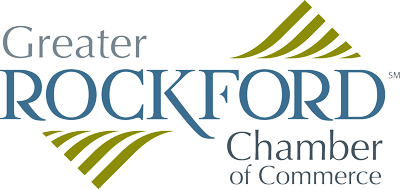Seize the moment
The time is right for renewed regional investment in economic development
By Terrance Hall, Eight Fifteen Impact
In March 2024, the Greater Rockford Chamber of Commerce (GRCC) engaged Eight Fifteen Impact to develop a new strategy and tactical plan for the organization’s newly chartered economic development work. At the time, I was coming off a three-year tenure as a site selection consultant—evaluating communities across the U.S. for their potential to attract corporate investment and partnering with local leaders to build strategies that unlock that potential.
The chance to apply that same disciplined approach to assessing opportunities and challenges here in Rockford, a community where I started my career and have grown to love, was simply too good to pass up.
Together, GRCC and Eight Fifteen Impact set out with three primary goals:
- Develop a strategic roadmap to guide economic development efforts with clear, actionable tasks and measurable outcomes.
- Strengthen GRCC’s strategic capability by rolling out real, hands-on initiatives and creating practical tools and processes that support long-term growth.
- Refine the region’s value proposition, strengthening its ability to retain, expand, and attract businesses.
The economic landscape in the Rockford Regions, and across the U.S., is evolving faster than at any time in recent history. Converging trends are reshaping how communities must approach economic development, presenting both new opportunities and emerging threats.
Here are the top reasons why now is the perfect time for GRCC to embrace a bold new vision for economic development.
1. A moment of economic transition
National and global supply chains are being redefined. Companies are reshoring, nearshoring, and diversifying operations at record levels. Federal and state programs, such as the CHIPS (Creating Helpful Initiatives to Produce Semiconductors) and Science Act, Inflation Reduction Act, and infrastructure funding, are driving place-based investment. Communities prepared with strategic priorities, project-ready sites, and strong partnerships will be the ones to benefit most.
2. Industry transformation
Traditional manufacturing—long the backbone of the Rockford region’s employment base—is declining in total employment share, even as output remains strong and increases. Automation, robotics, and digital technologies are reshaping production processes, demanding new skillsets and capital investment.
3. A strong local appetite for collaboration
Leadership across the public, private, and nonprofit sectors in the Rockford Region has expressed a strong willingness to work together on shared priorities. This collaborative spirit, if translated into coordinated action, can amplify results and accelerate progress.
4. Growing competition among peer regions
Communities across the Midwest are investing aggressively in talent, site readiness, and marketing. Without a unified and proactive approach, our region risks falling behind competitors who are already aligning around shared strategies and measurable outcomes.
5. Evolving employer and workforce needs
Employers increasingly prioritize communities that invest in talent development, innovation ecosystems, and quality of life. By aligning education, workforce, and business strategies, the Rockford Region can better support employers today while attracting the industries of tomorrow.
6. Entrepreneurship and innovation
Growth in small, high-tech, and niche manufacturing firms is reshaping regional economies. These companies are highly mobile and rely on agile networks that can provide support, visibility, and coordination.
7. The opportunity to advance the region’s narrative
For too long, Rockford’s story has been told by others or only through its past. Through a focused economic development strategy, GRCC and its partners have the opportunity to build on the current work being done in talent attraction and quality of place initiatives (such as GoRockford’s Made for Rockford initiative) to reframe the region’s identity around its assets, resilience, and future potential—further shaping how investors, employers, and residents see our community.
These trends make it clear that now’s the time to strengthen our regional economic development efforts so we can seize the opportunities that will shape our community’s future. The GRCC’s vision to relentlessly grow, develop, and support a thriving business community positions it as the leading economic development organization for Winnebago County and the Rockford Region—one that tells the region’s story, supports its employers, and drives measurable economic growth. Thanks to the input and collaboration of GRCC’s board, Economic Development Committee, and regional partners, the new GRCC economic development roadmap will position the Rockford Region to do exactly that.
